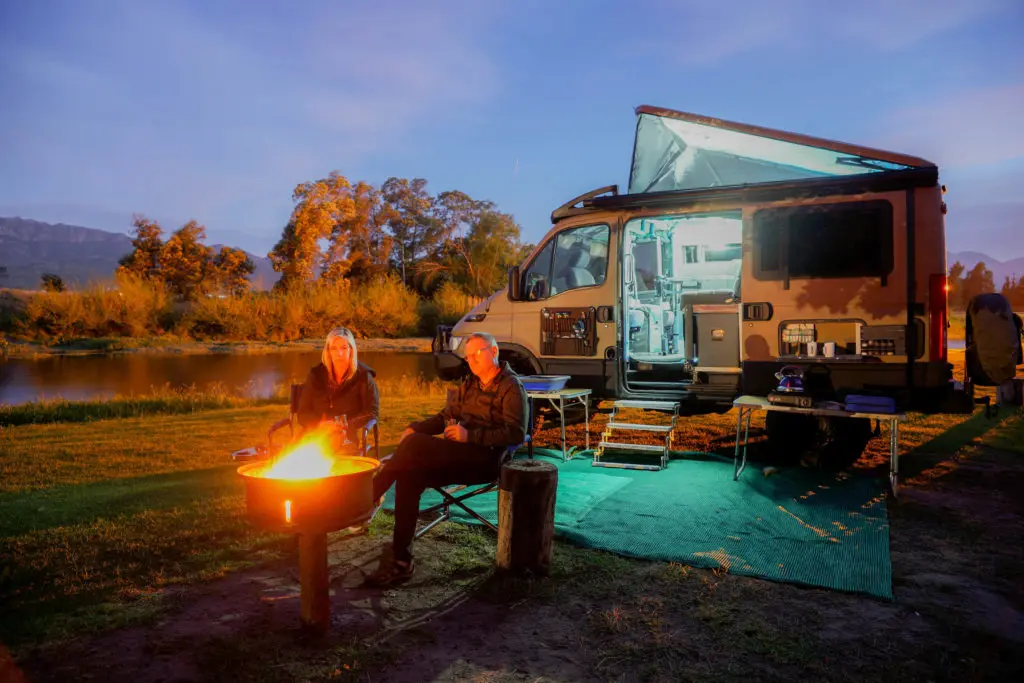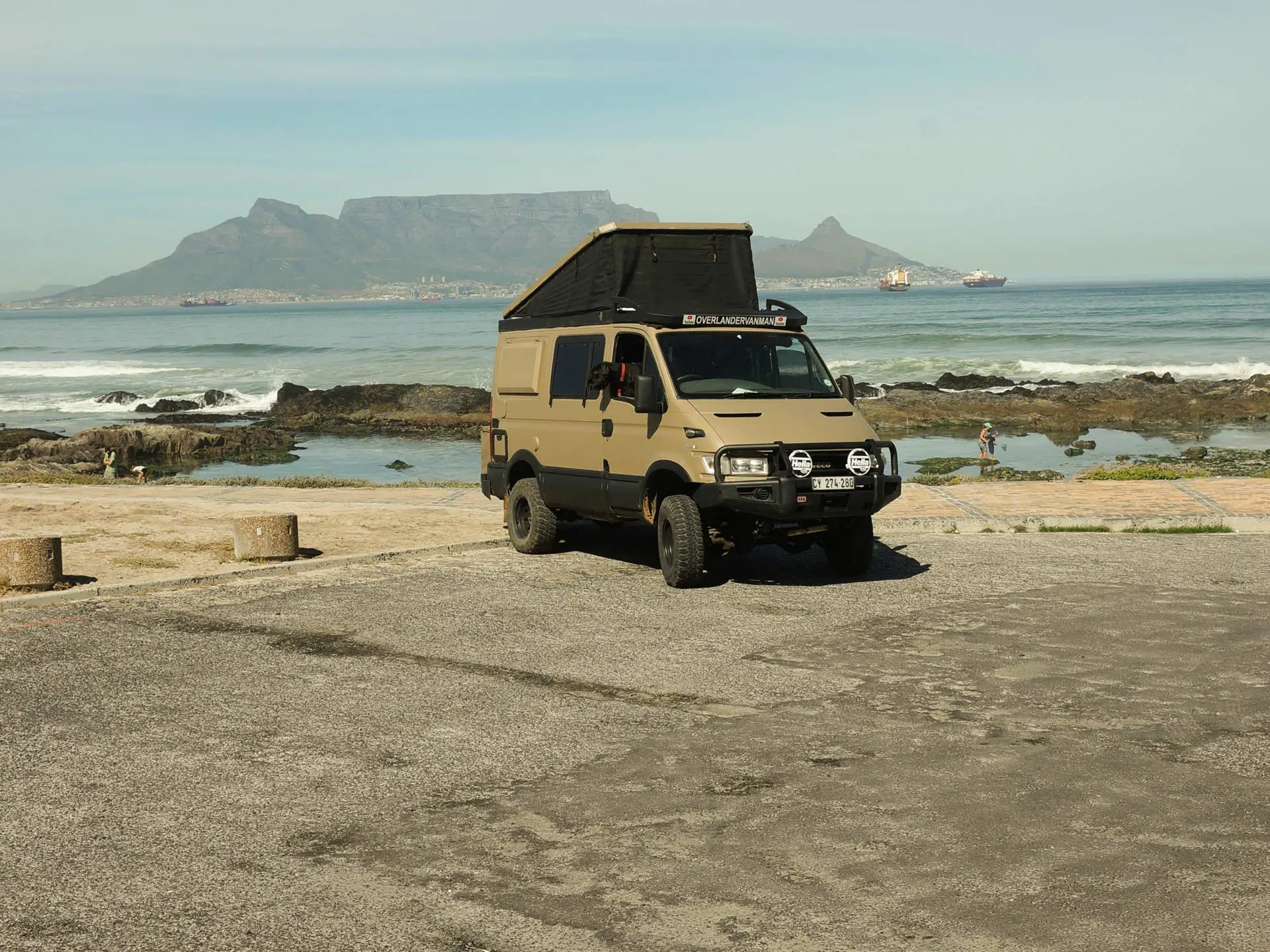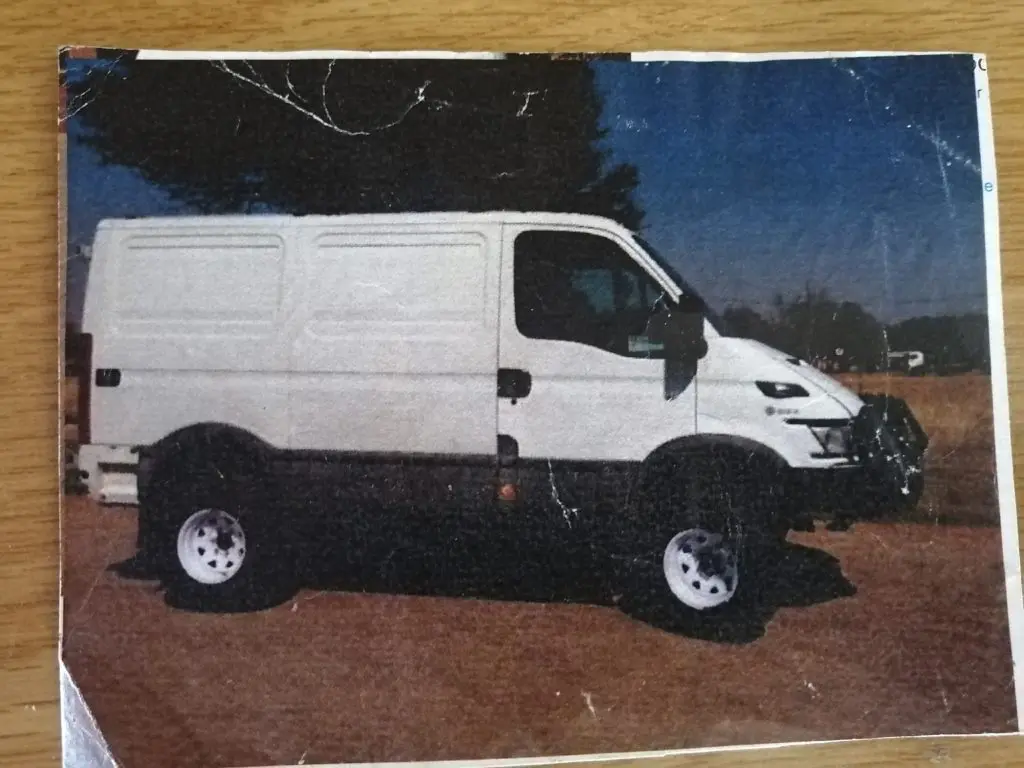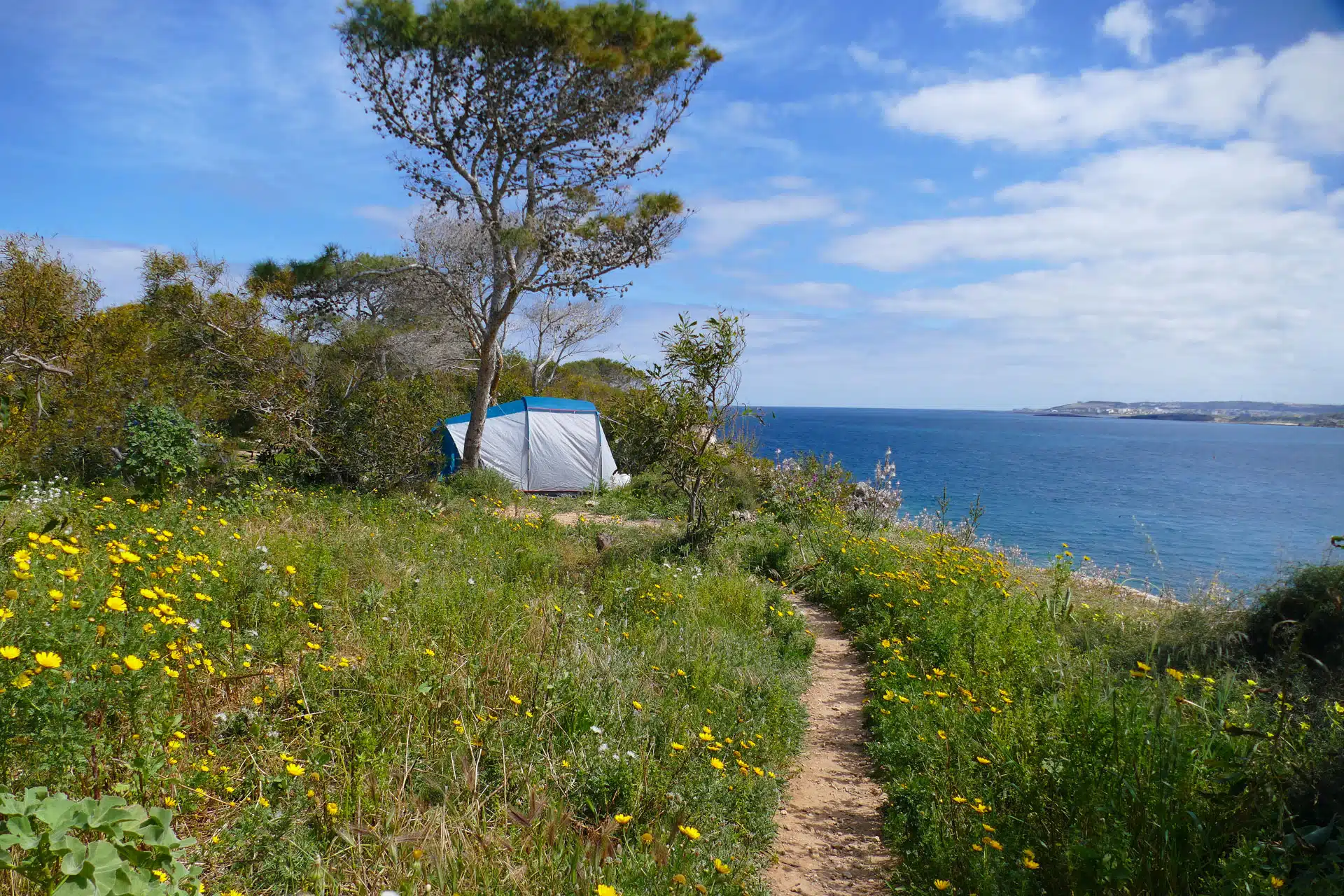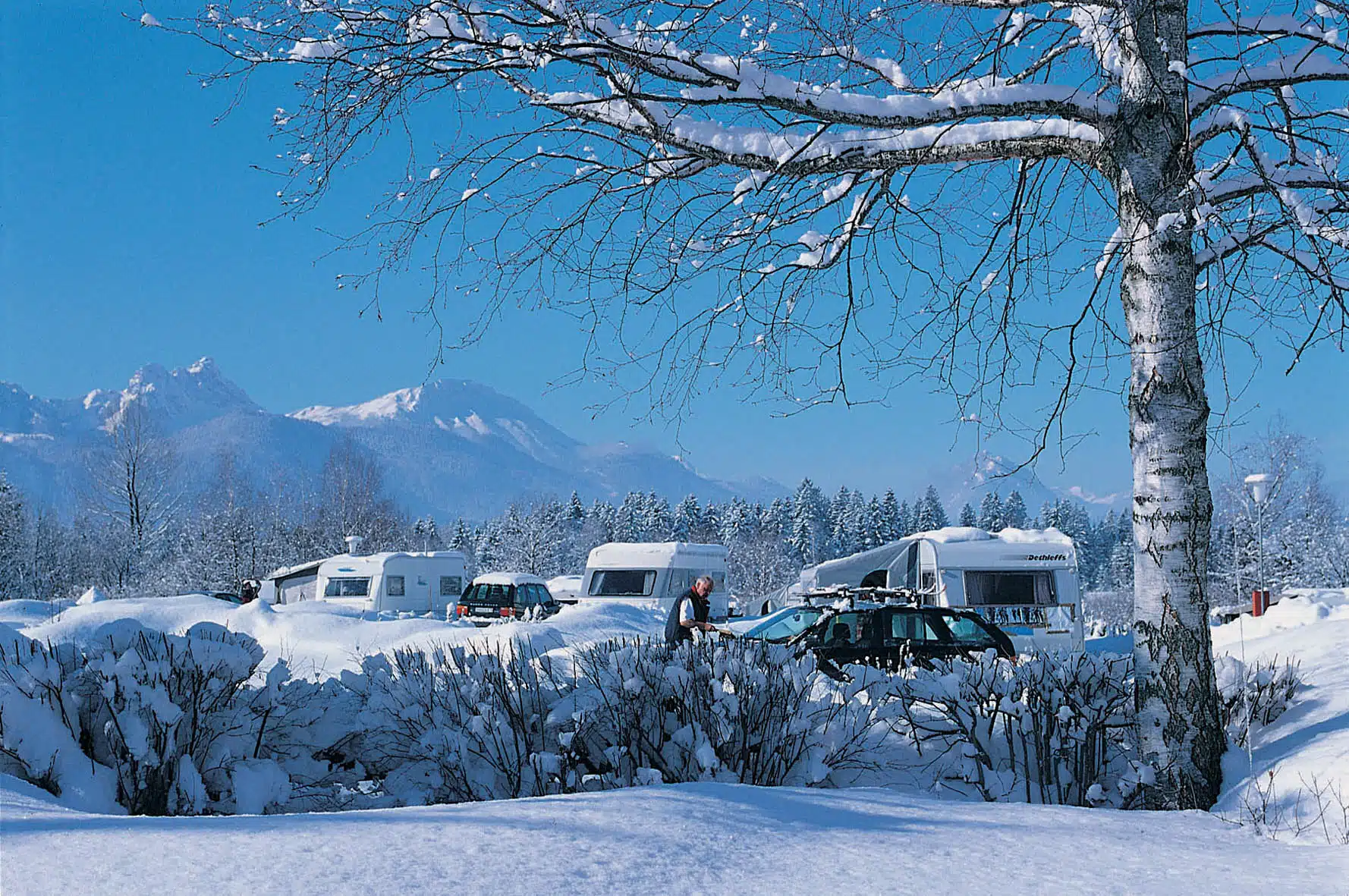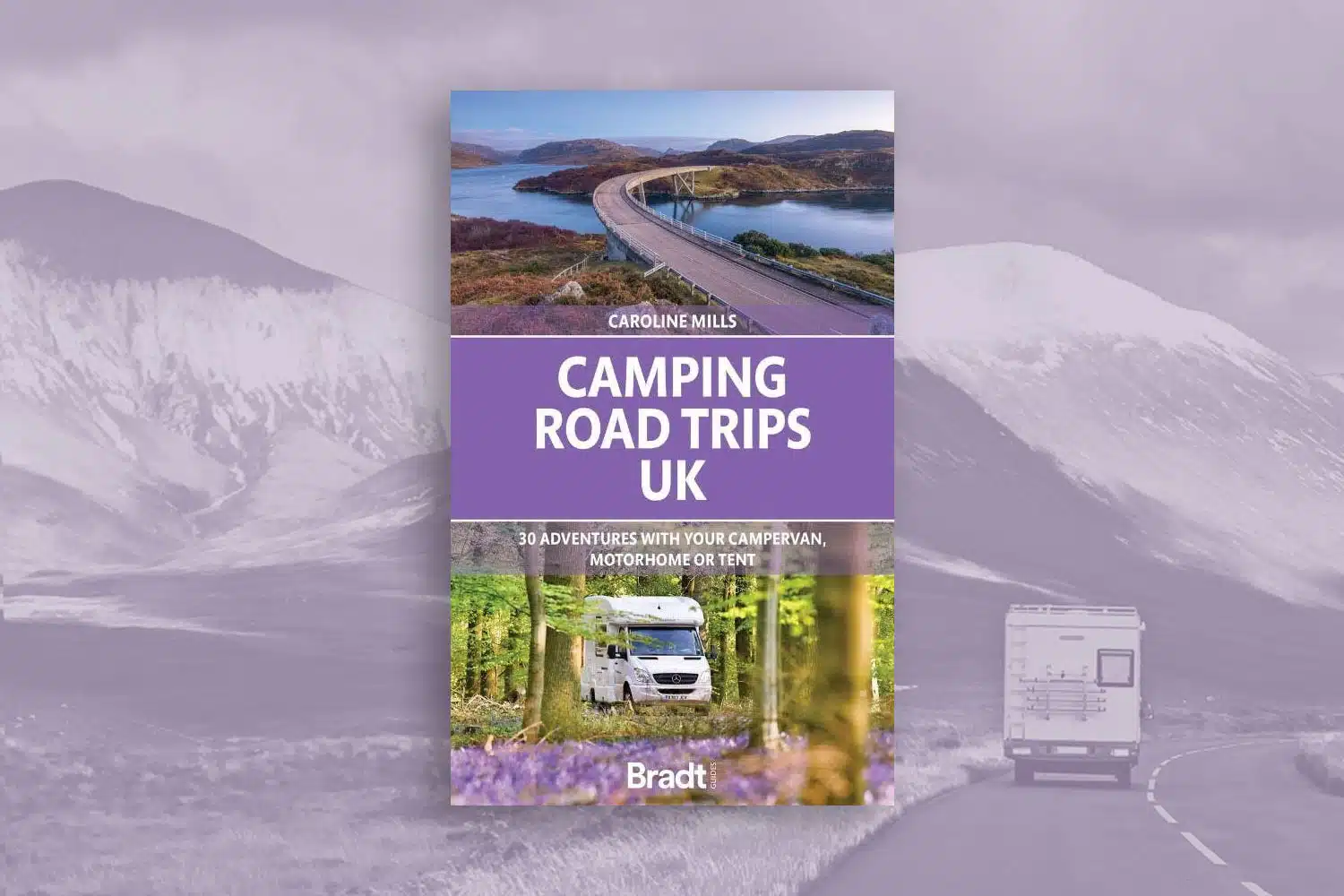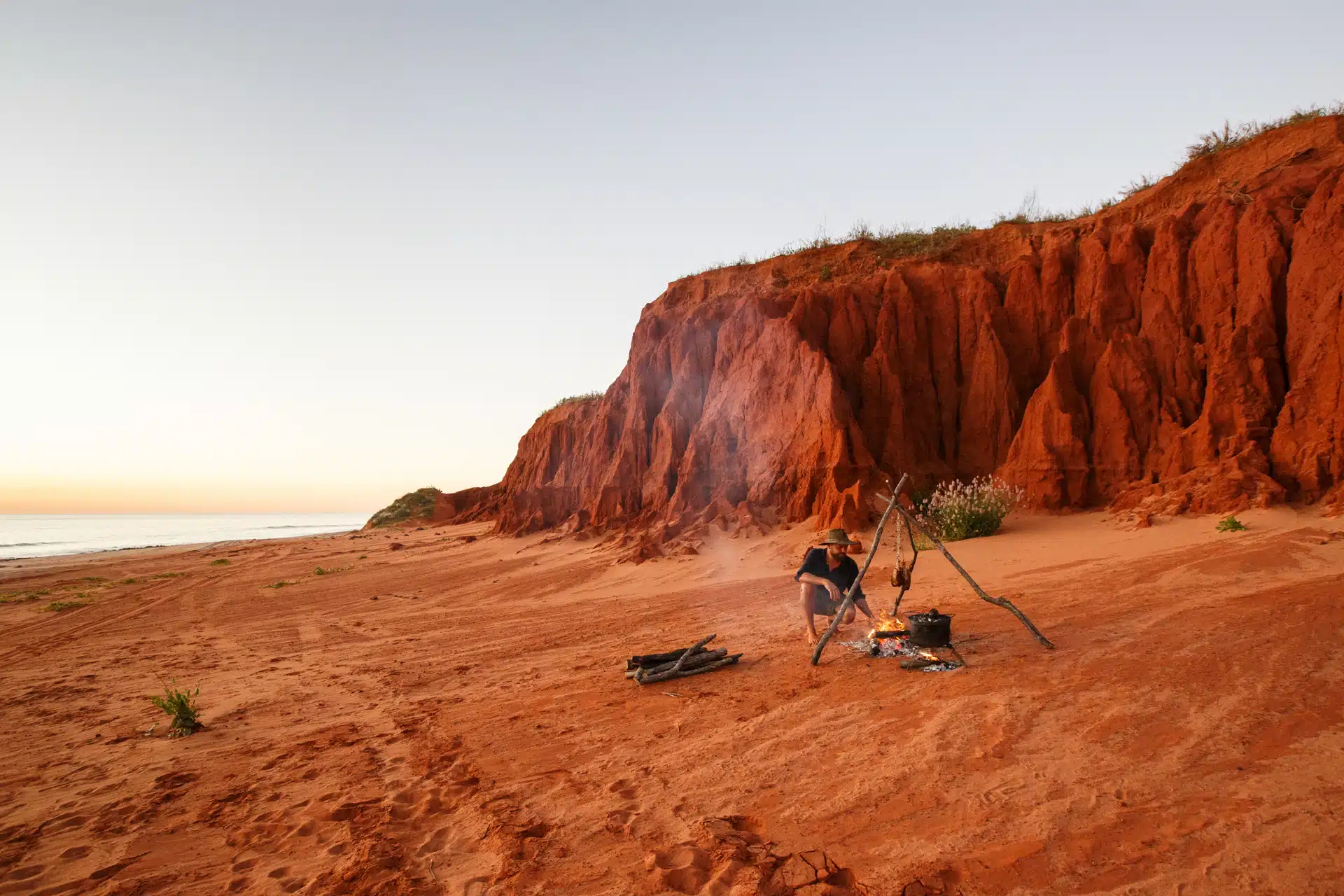I see an Iveco 4×4 panel van online and the price is right. It’s a short wheel base model and has a Toyota Land Cruiser chassis with Nissan Patrol differentials. The transfer case is American, the NP205. It gives you a choice to engage the front and back differentials separately or together in 4×4 mode. There are, however, two problems: the vehicle is in Pretoria, and, as I would discover, if I exceed 40 km/h, the steering wheel threatens to jerk out of my hands. Nevertheless, I decide to buy the Iveco, pay a deposit and fly back home.
The problem, of course, is how to get the Iveco to the Cape, because driving it here won’t work. I am lucky: Carel van Niekerk of Piket Implements hears of my dilemma and says he has a spot on a truck that’s heading south from there. By now, I’m pretty broke and for the time being can’t spend more money on the Iveco.
This does, however, give me time to diagnose the fault. Basically, I have to change the front section of the chassis. Not only do I need to move the steering box, but also all the steering arms and their ball joints. Furthermore, 10 mm steel sheets must be welded to the ladder frame chassis and the front differential must be moved. Steering issue solved!
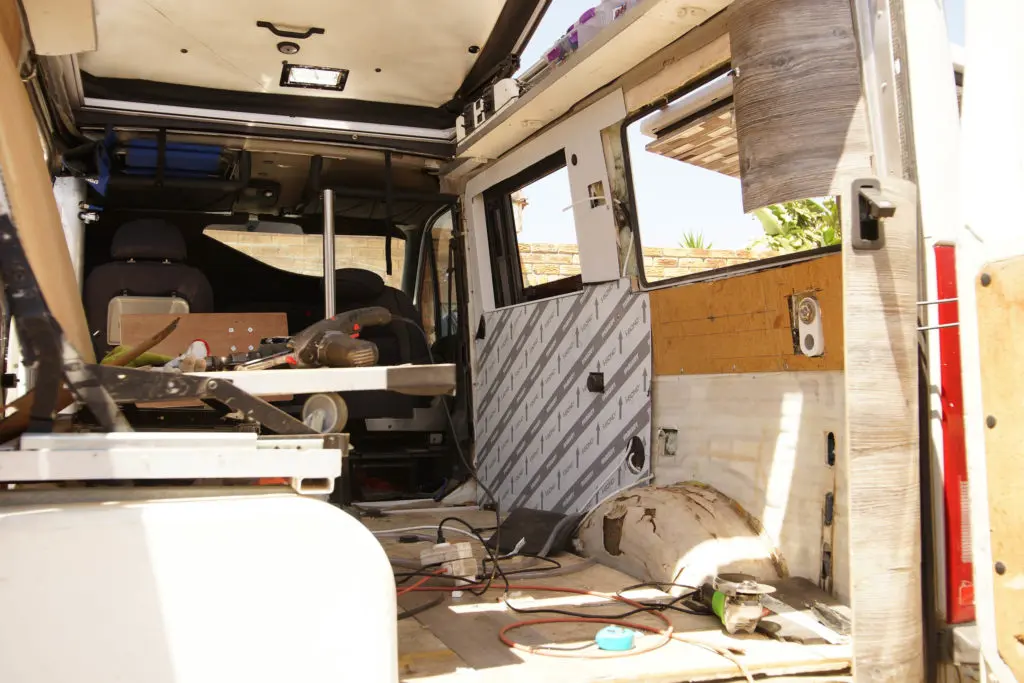
After six months of watching YouTube videos on the subject, I’m ready to tackle the interior. But first I set some principles I will adhere to.
Firstly, the weight: it must be kept as low as possible. All heavy items in the Iveco must also be mounted as low as possible. The interior finish of the motorhome will be aluminium and fiberglass.
Secondly, the interior space should be utilised efficiently. Next, add proper insulation against cold and heat – this also means less noise in the motorhome. And a comfortable bed is a must – and one for each of my twin daughters, Anicia and Rencia. They’ve already left school, but sometimes they camp with us. The layout must be such that everything is easily accessible, but also where it belongs – for example, kitchenware together and bedroom items where you sleep. I don’t want to struggle with everything packed away in ammo boxes.
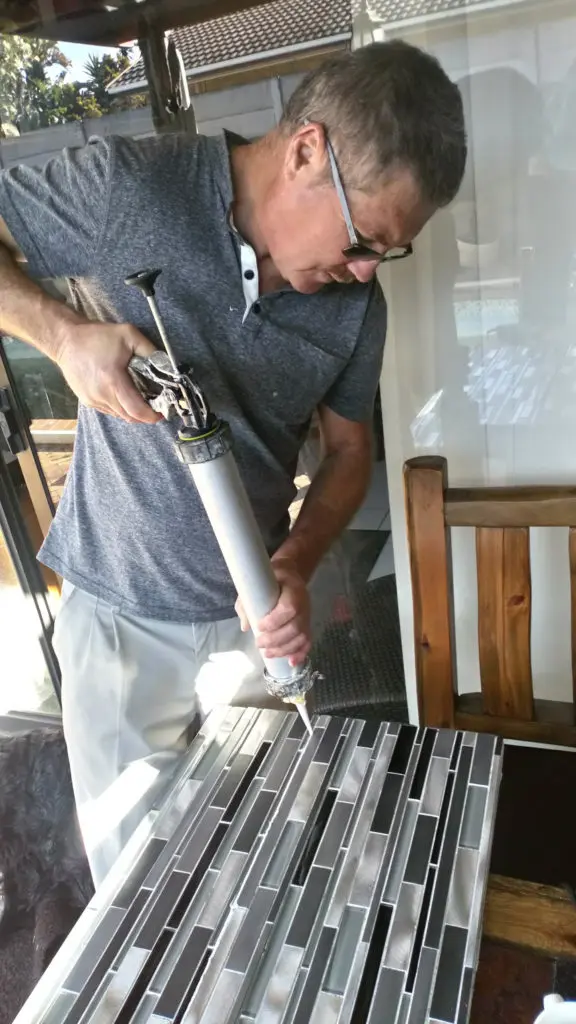
Nothing is allowed to roll around while I drive, nor do I want rattles. For this, I line almost the entire interior with rubber before any of the panels are secured. I install a toilet and shower for when we camp deep in the bush, and finally – just in case – the Iveco has to fit inside a shipping container.
The first step is to purchase a TIG welder so that I can weld aluminium. Again, YouTube teaches me. Coincidentally, the owner of my local hangout wants to get rid of his fibreglass bar countertops at the same time and I recognise this could become furniture for my new motorhome. I load it all and soon my backyard is littered with used countertops.
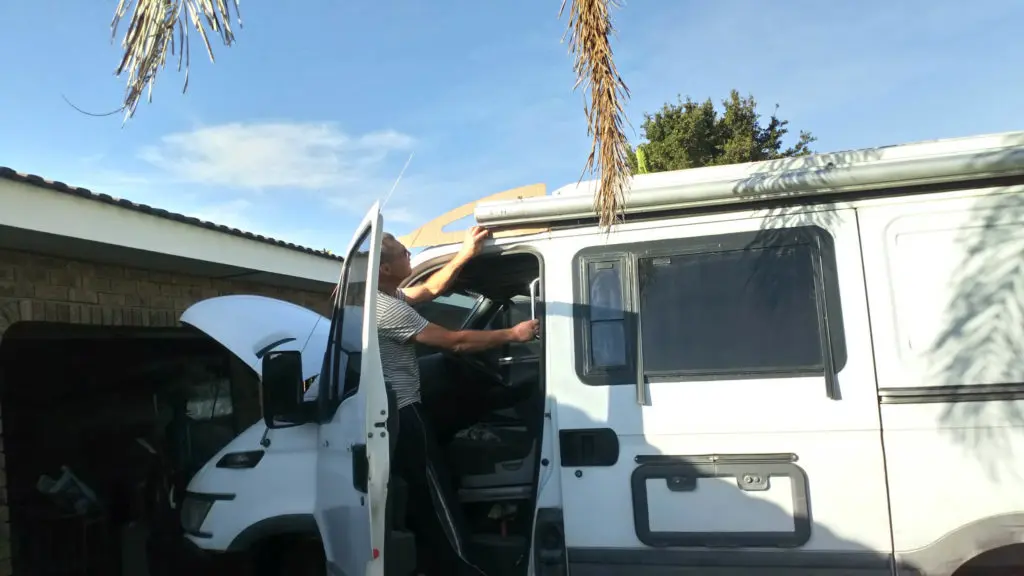
In terms of tools, I started the whole project with just basic equipment: a circular saw, a drill, a jigsaw and an angle grinder. I make my own table saw by mounting the circular saw upside down in a wooden box. The whole building project is done in my driveway since the Iveco is too high to fit into my garage.
It’s time to start with the insulation. The most important element is finding the right material, but I come across something that will work – it comes in 10m rolls and is similar to the insulating material you see around air-con pipes. It’s as light as a feather, keeps the Iveco cool and it’s also effective for sound insulation.
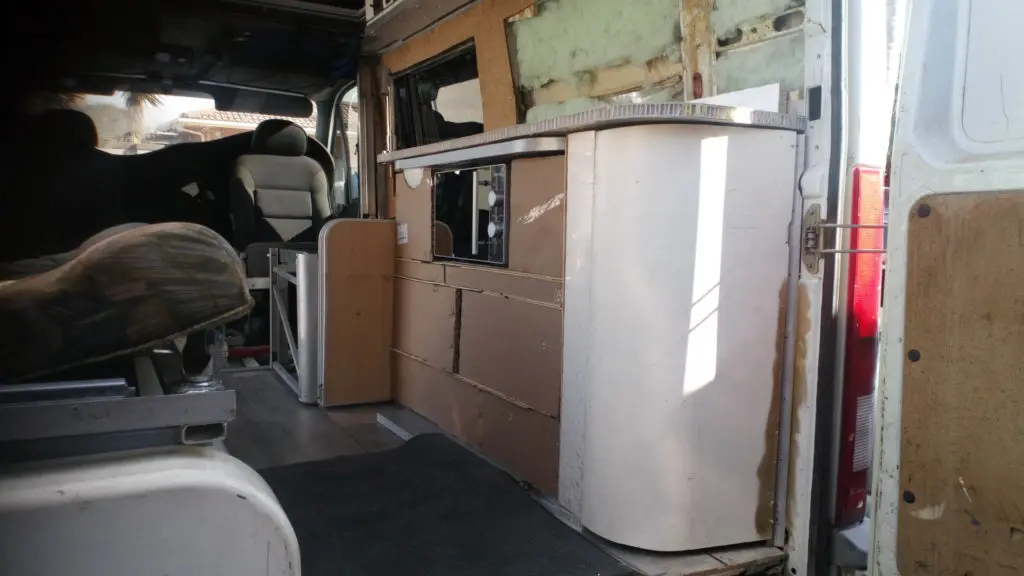
The interior walls and windows are next. I decide on glass because it is affordable and doesn’t scratch as easily as Perspex windows. On the side is a smaller window through which my camera’s long lens fits. I lift the floor by an inch because the space needs insulation, and it creates room for wiring – nicely out of sight. I use conduit pipe to guide the wires from one end to the other, and clearly mark where it goes so that I can easily fix outages. Initially I choose wood for the cupboards, but quickly decide it won’t work. I scrap the idea and switch to fibreglass. Although it looks as if the cabinets have a wood finish, they’re those fibreglass countertops covered in a layer of plastic with a wood design.
The first items you need at a campsite are the camping table and chairs, which is why I set up a shelf above the driver and passenger for the chairs. Both my camping tables as well as a smaller one is stored by the passenger door. The induction plate got its own cupboard at the tail of the Iveco with its own door.
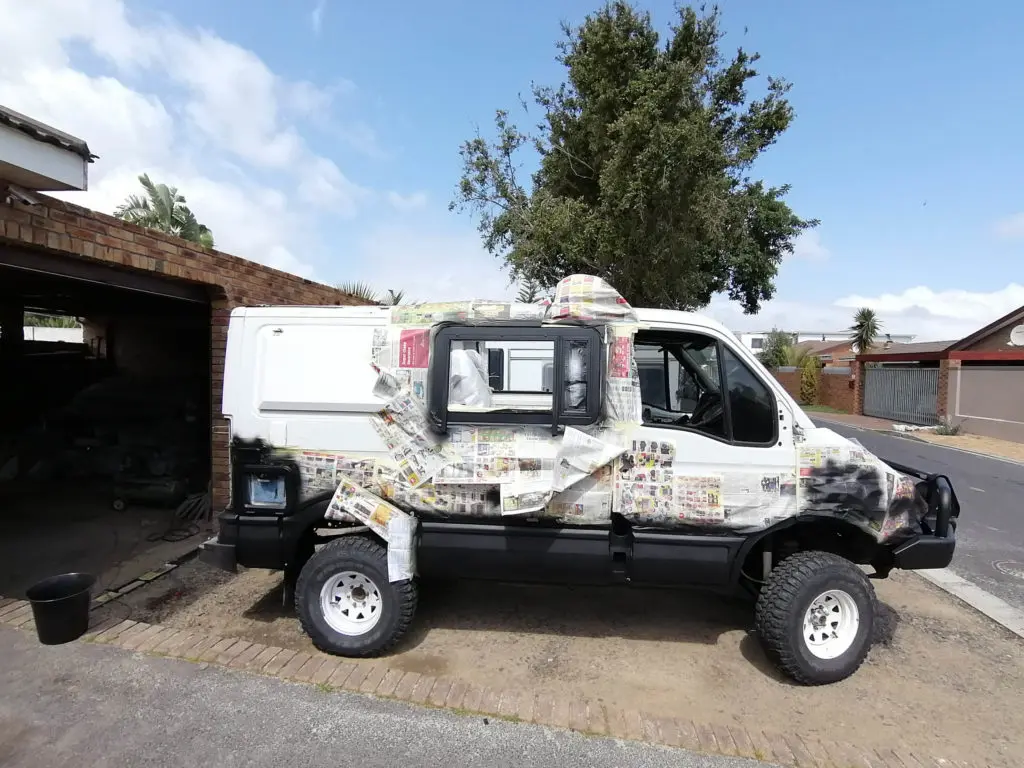
For the solar panels, inverters and other electrical equipment, I needed to ask for advice. The two 105 Ah deep-cycle batteries are now under the front seats – I had to adjust their bases anyway – and are connected to 300 W of rooftop solar panels.
The seats themselves I found on the internet. They’re the ones you can swing around to sit in your ‘living room’. By the way, while adjusting the seat bases, I also moved them slightly farther apart so that my 40l freezer could fit into the space between them. It was quite a thing as the handbrake and gear lever changing mechanism also had to move. It is also a good place for heavy goods such as the batteries, which should be as close as possible to the front wheels.
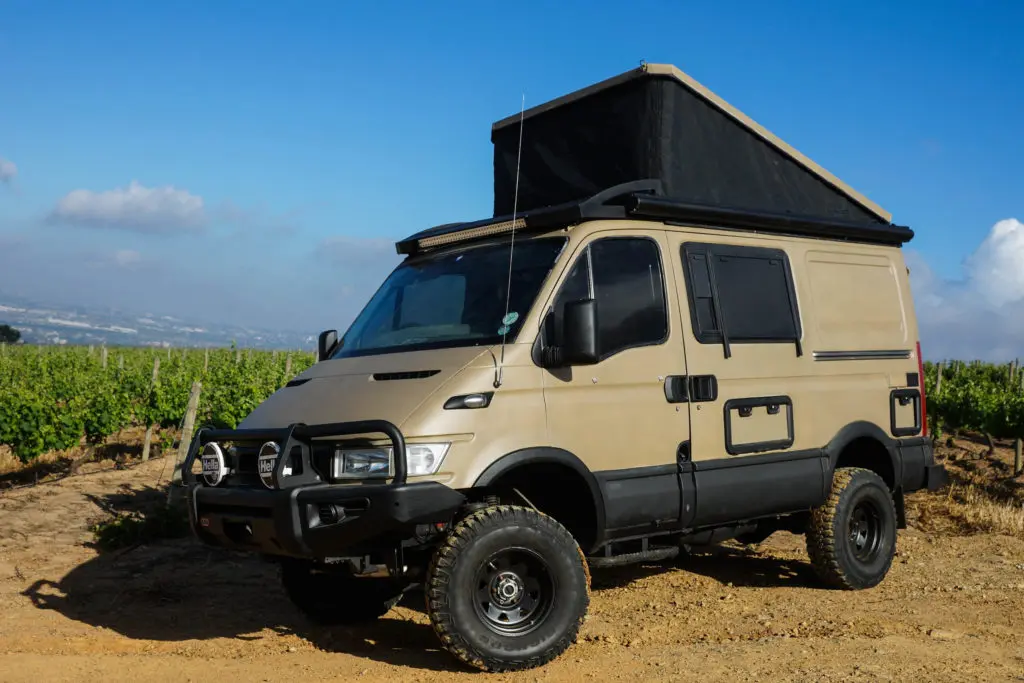
The Australian Projecta MPPT regulator monitors matters here. With this system you are completely self-sufficient in terms of electricity. My water-heating system is unique. The electric 10L geyser with its temperature regulator plugs into the inverter and can work while driving – when you arrive at the campsite you can connect it to the national grid. The water heats quickly; you can shower within 15 minutes. When you open the hot-water tap, the temperature’s just right and you can shower using only 4l of water. The water tanks are two transparent 25l plastic containers.
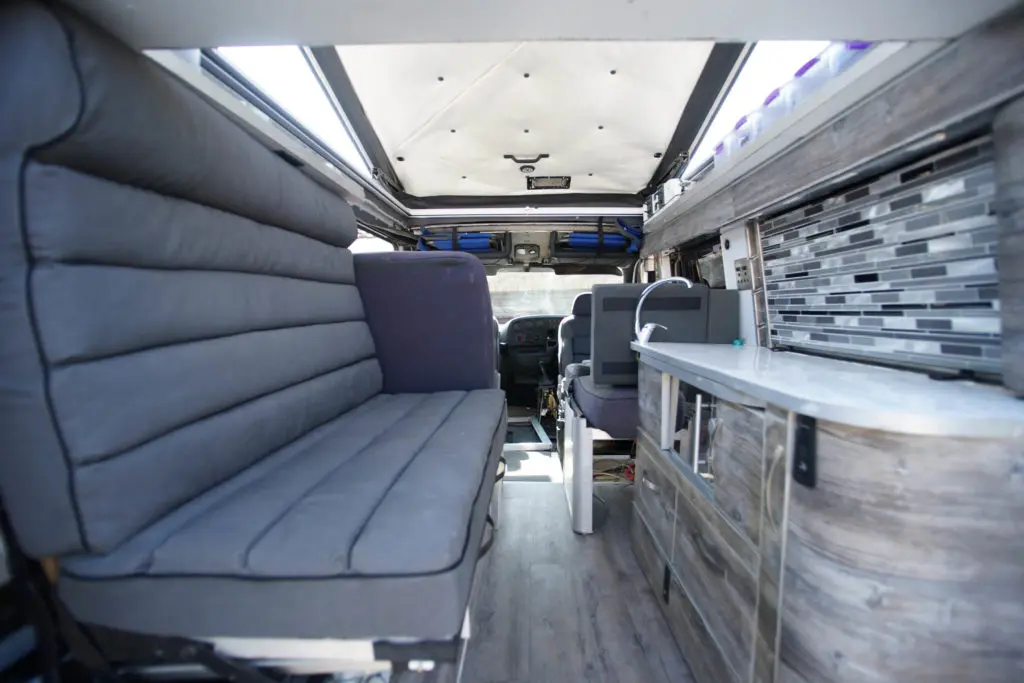
They’re by the back door and you can see how much water is left. They’re placed in such a way that you can easily fill them from a river. The floor at the sliding door and in front of the second row of seats is also a concealed shower floor. A shower curtain keeps things private and you can stretch it from side to side behind the front seats to make the whole interior private. The cassette toilet pulls out from under the farthest seat.
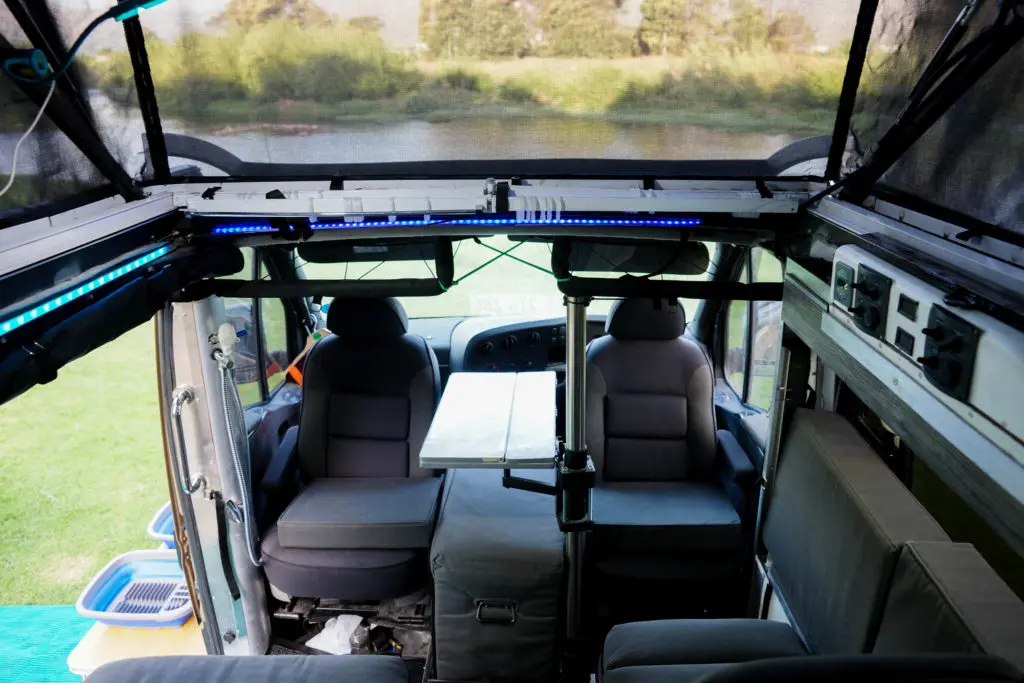
The roof had to come off for the popup roof, and here I also learnt a lesson. I decided to lift the roof hydraulically, but I made a mistake somewhere and the roof shot off the Iveco like a rocket! Now it’s back to the conventional way and I use four gas struts to get the job done. The roof can open to any side so it can ‘follow’ the sun. I didn’t want to use mesh between the roof and hull of the Iveco as I love the open feel. But monkeys at Augrabies and baboons at Citrusdal changed my mind.
Now I have one-way gauze material that’s actually used for blinds. So, I still have my privacy and have fresh air passing through to the interior.
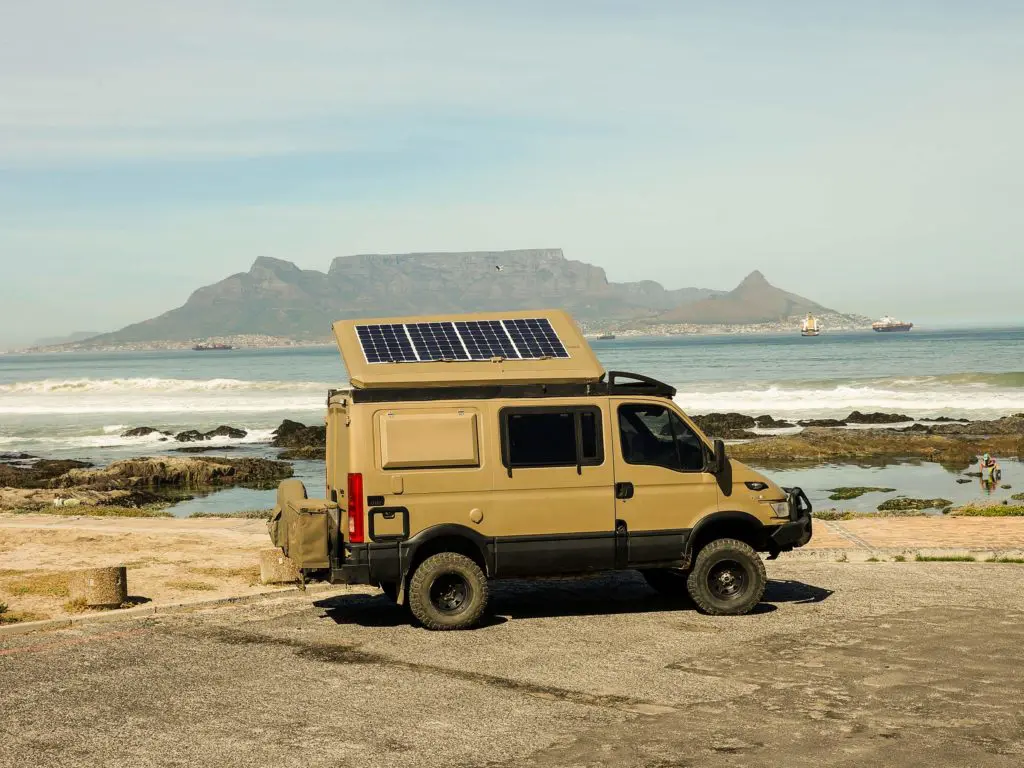
The Iveco has two 75l diesel tanks that can be refilled from both sides. I haven’t had the courage to fill both at the same time, because I shudder to think how much it will cost. You also don’t want to carry unnecessary weight – except, of course, when you’re headed for somewhere remote.
Today, I’m pleased with the layout and the Iveco handles well. Remember, such a project comes at a price.
Renda was a work widow for almost two years, I had to perform all the labour on the Iveco after hours… and you may as well cancel all your weekends off.
